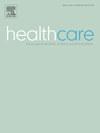Measuring prescriptions dispensed from urgent care through the VA community care benefit
IF 2.1
4区 医学
Q3 HEALTH POLICY & SERVICES
Healthcare-The Journal of Delivery Science and Innovation
Pub Date : 2025-06-24
DOI:10.1016/j.hjdsi.2025.100765
引用次数: 0
Abstract
Background
The Department of Veterans Affairs (VA) now offers eligible Veterans an urgent care benefit covering visits and 14-day prescriptions outside of VA. Prescriptions written and dispensed outside VA lack the clinical decision support of VA-issued prescriptions, raising concerns about safety and polypharmacy. To date, there has been limited analyses of prescribing patterns through the urgent care benefit.
Methods
We used a repeated cross-sectional design to examine Veterans who filled non-VA urgent care prescriptions from 07/30/2019 to 03/20/2023. Data were sourced from the Community Care Reimbursement System (CCRS), which tracks all VA-paid medications dispensed by non-VA pharmacies. We identified potentially noncompliant prescriptions as those not meeting VA urgent care benefit restrictions. We also identified prescriptions continued in VA as a “new VA medication” after 30-days from the urgent care fill.
Results
Overall, 83,862 Veterans received 271,476 non-VA urgent care prescriptions. Veterans’ average age was 55.9, with 79.3 % male, 73.0 % White, 86.7 % non-Hispanic, and 41.4 % rural dwelling. Urgent care use increased from 341 prescription fills in March 2020 to 9738 in January 2023. Frequently filled prescriptions included antimicrobials (n = 114,492, 42.2 %) and hormones/synthetics/modifiers, like steroids (n = 44,457, 16.4 %). Potentially noncompliant prescriptions accounted for 9.3 %, with 6.7 % not on the urgent/emergent formulary and 2.6 % supplied for over 14 days. Over 70,704 (26.0 %) prescriptions were continued in VA post-urgent care visit, of which 15 % had no prior VA fill (i.e., new VA medication). Veterans with new continued VA prescriptions were more likely to be male (79.4 % vs. 73.9 %) and from urban areas (59.3 % vs. 57.5 %) (All P < .001).
Conclusions
Veterans increasingly received non-VA prescriptions through urgent care centers in the community from 2019 to 2023, including drug classes of interest to VA due to potential risks of inappropriate prescribing (e.g., steroids) or drug interactions (e.g., antibiotics). The CCRS database can be integrated with other VA databases as a quality improvement tool to improve care coordination and drug safety.
Implications
This evaluation highlights the need for improved clinical decision support for non-VA prescriptions and demonstrates the potential of integrated data systems to monitor and enhance medication safety and coordination within VA.
Level of evidence
Cross-sectional analysis of national VA data.
衡量通过VA社区护理福利从紧急护理中分配的处方
退伍军人事务部(VA)现在为符合条件的退伍军人提供紧急护理福利,包括访问和在VA以外的14天处方。在VA以外编写和分发的处方缺乏VA签发的处方的临床决策支持,引起了对安全性和多药的担忧。迄今为止,通过紧急护理效益对处方模式的分析有限。方法采用重复横断面设计,对2019年7月30日至2023年3月20日期间开具非va紧急护理处方的退伍军人进行调查。数据来自社区医疗报销系统(CCRS),该系统跟踪所有由va支付的非va药房分发的药物。我们将潜在的不合规处方确定为不符合VA紧急护理福利限制的处方。我们还确定了在紧急护理填补后30天内继续在VA使用的处方为“新的VA药物”。结果总体而言,83862名退伍军人收到了271476张非va紧急护理处方。退伍军人的平均年龄为55.9岁,其中79.3%为男性,73.0%为白人,86.7%为非西班牙裔,41.4%为农村居民。紧急护理使用从2020年3月的341张处方增加到2023年1月的9738张。经常配药的处方包括抗菌剂(n = 114,492, 42.2%)和激素/合成物/调节剂,如类固醇(n = 44,457, 16.4%)。潜在的不合规处方占9.3%,其中6.7%不在紧急/紧急处方中,2.6%的处方超过14天。超过70,704(26.0%)处方在VA紧急护理后访问中继续使用,其中15%没有先前的VA填充(即新的VA药物)。有新的持续退伍军人VA处方的退伍军人更有可能是男性(79.4%对73.9%)和来自城市地区(59.3%对57.5%)(All P <;措施)。从2019年到2023年,退伍军人越来越多地通过社区紧急护理中心获得非VA处方,包括由于处方不当(如类固醇)或药物相互作用(如抗生素)的潜在风险而引起VA感兴趣的药物类别。CCRS数据库可以与其他VA数据库集成,作为质量改进工具,以改善护理协调和药物安全。本评价强调了改进非VA处方的临床决策支持的必要性,并展示了集成数据系统在VA内监测和加强药物安全性和协调方面的潜力。证据水平:全国VA数据的横断面分析。
本文章由计算机程序翻译,如有差异,请以英文原文为准。
求助全文
约1分钟内获得全文
求助全文
来源期刊

Healthcare-The Journal of Delivery Science and Innovation
HEALTH POLICY & SERVICES-
CiteScore
4.90
自引率
0.00%
发文量
37
期刊介绍:
HealthCare: The Journal of Delivery Science and Innovation is a quarterly journal. The journal promotes cutting edge research on innovation in healthcare delivery, including improvements in systems, processes, management, and applied information technology.
The journal welcomes submissions of original research articles, case studies capturing "policy to practice" or "implementation of best practices", commentaries, and critical reviews of relevant novel programs and products. The scope of the journal includes topics directly related to delivering healthcare, such as:
● Care redesign
● Applied health IT
● Payment innovation
● Managerial innovation
● Quality improvement (QI) research
● New training and education models
● Comparative delivery innovation
 求助内容:
求助内容: 应助结果提醒方式:
应助结果提醒方式:


